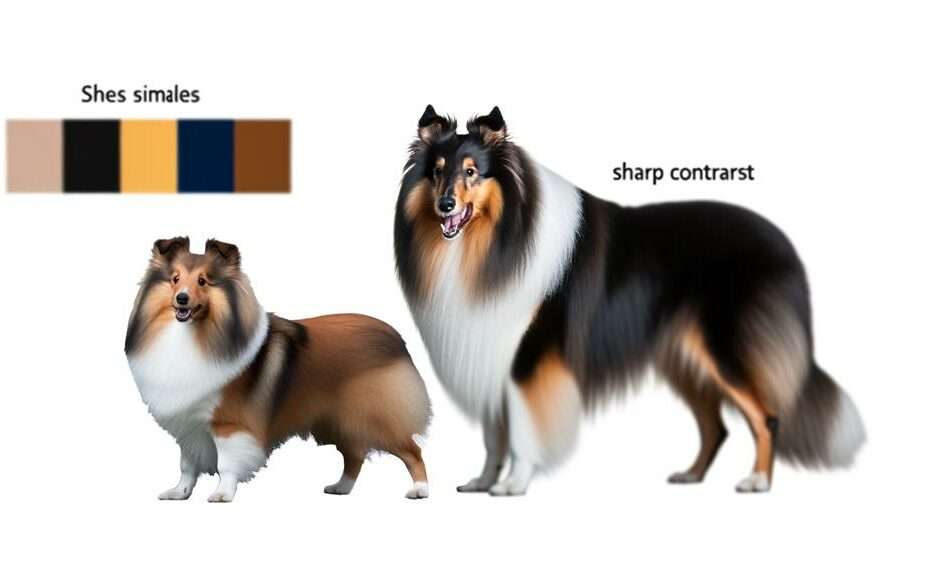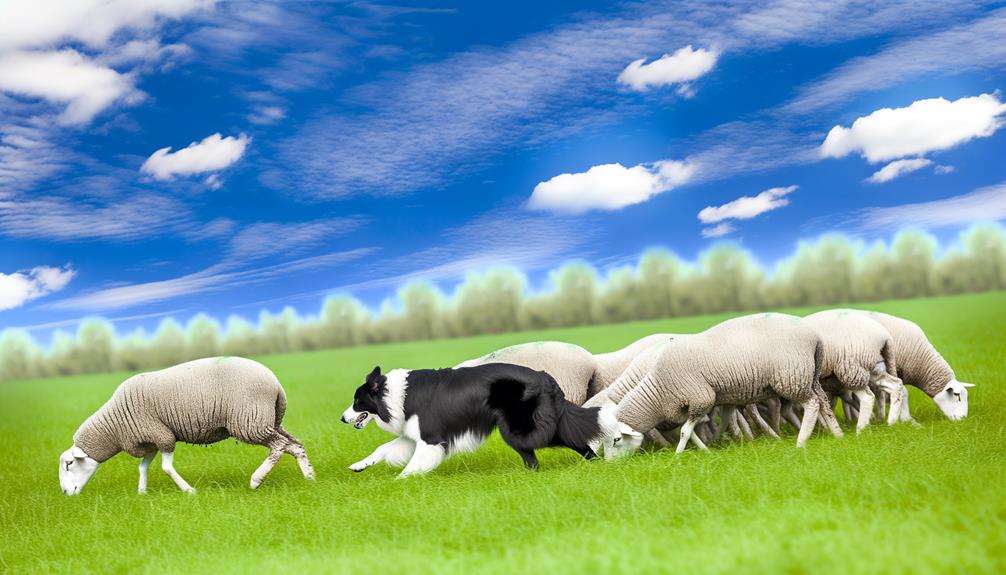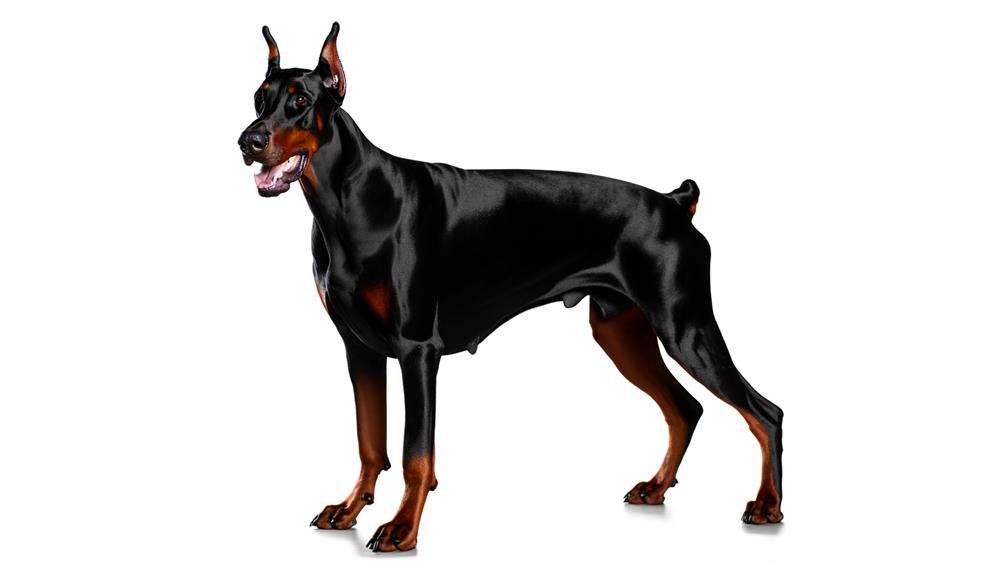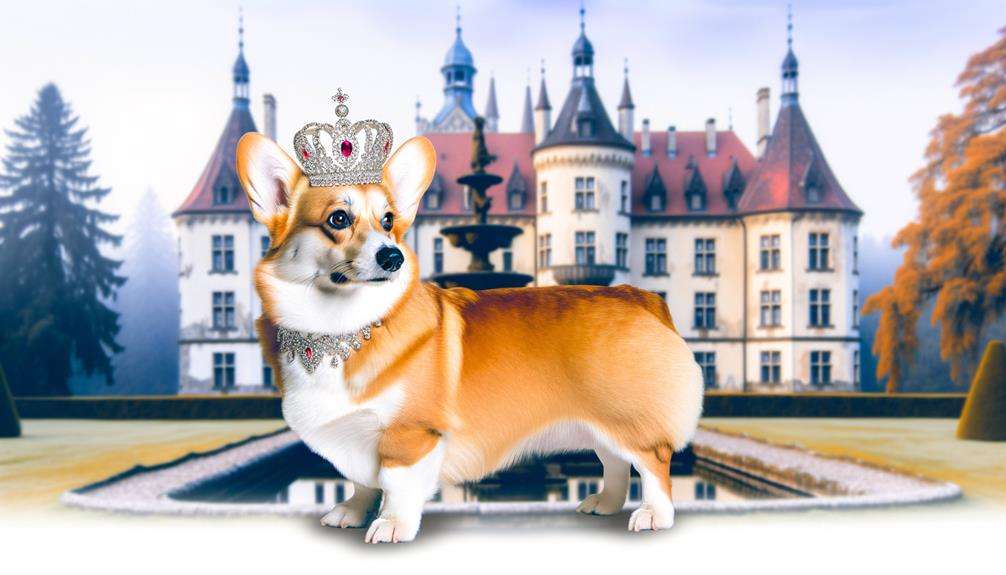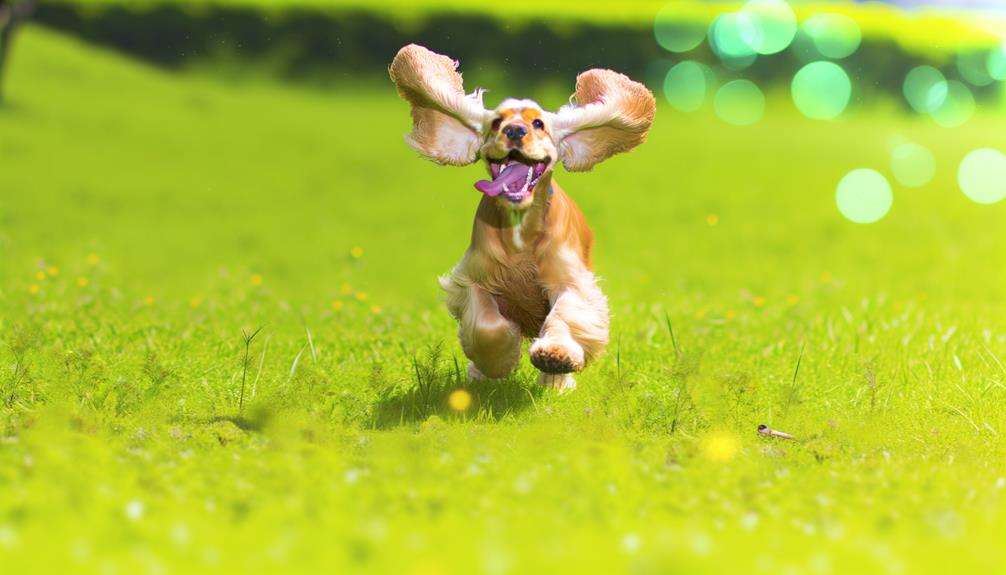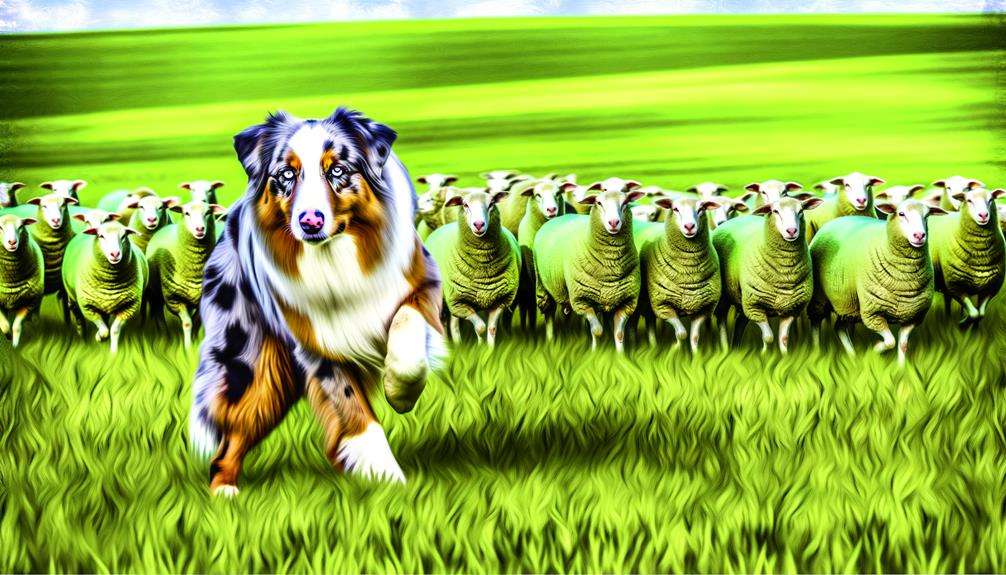You might think the Shetland Sheepdog is just a smaller version of the Collie, but there's more to this breed than meets the eye. With their striking resemblance, it's easy to see why this misconception arises.
However, delving deeper into the history and traits of the Shetland Sheepdog uncovers a fascinating tale of a breed that stands out not just for its looks but also for its unique qualities. Digging into the nuances of what sets them apart will shed light on the intricacies that make them a breed worth exploring further.
Key Takeaways
- Shetland Sheepdogs, or Shelties, have unique herding origins distinct from Collies.
- Distinctive coat features and colors set Shelties apart from Collies.
- Shelties exhibit strong herding instincts and intelligence, like Collies.
- Mane and tail characteristics contribute to Shelties' regal appearance, distinguishing them from Collies.
Breed Background and Origins
The Shetland Sheepdog, distinct from miniature collies, has its origins rooted in the Shetland Islands of Scotland, where it was developed through strategic crossbreeding practices. This breed, also known as the Sheltie, emerged from crossing rough collies with other small herding breeds and spaniels.
The Shetland Sheepdog's history is intertwined with its herding heritage, reflecting its intelligence, good humor, and willingness to work. Initially recognized in England in 1909 and subsequently registered in the US in 1911, the Shetland Sheepdog showcases a unique working ability honed from its past role in herding sheep on the Shetland Islands.
Physical Characteristics and Coat
Shetland Sheepdogs exhibit distinctive physical characteristics in their coat, displaying various lengths and colors, including sable, black, and blue merle with white markings.
Their mane and tail are particularly noteworthy, with a long, flowing coat that requires diligent grooming to maintain its appearance.
The unique coat of Shelties serves a protective function, crucial for their agility in herding activities and adaptation to different environments.
Coat Length and Color
Featuring a long double coat with a dense undercoat, the Shetland Sheepdog's coat requires regular grooming to prevent matting. Shelties come in various coat colors, including sable, black, and blue merle with white markings. Their striking patterns contribute to their unique appearance. The double coat sheds year-round, necessitating consistent maintenance to keep it healthy and tangle-free. Shelties may display different coat color combinations like tricolor, bi-black, and modified colors such as merling and white factoring. Below is a breakdown of some common Shetland Sheepdog coat colors:
| Coat Colors | Description | Unique Features |
|---|---|---|
| Sable | Shades of brown | Most common color |
| Black | Solid black | Often with white markings |
| Blue Merle | Gray and black mix | Marbled or speckled appearance |
Mane and Tail Characteristics
With their distinctive mane of fur around the neck and bushy tail, Shetland Sheepdogs possess physical characteristics that set them apart from other dog breeds. The mane and tail play a crucial role in defining the breed's unique appearance. Here are some key points regarding the mane and tail of Shelties:
- Shelties have a mane of fur around their neck, resembling a lion's mane, which is a distinct feature of the breed.
- Unlike Collies, Shelties have a full, bushy tail that's carried low when at rest, adding to their unique appearance.
- The mane and tail contribute to Shetland Sheepdogs' elegant and regal look, differentiating them from other breeds like Collies.
- These features are part of the double coat of Shetland Sheepdogs, requiring regular grooming to prevent matting and maintain the breed's characteristic appearance.
Temperament and Behavioral Traits
Intelligence, loyalty, and herding instincts shape the temperament and behavior of the Shetland Sheepdog breed. Shelties, as they're affectionately known, exhibit strong herding instincts inherited from their collie ancestry. This trait may manifest in their tendency to gather and corral family members, especially children. While they're typically reserved with strangers, Shetland Sheepdogs form deep bonds with their families, displaying an affectionate and devoted nature towards their loved ones.
The high energy levels of Shelties make them excel in various activities such as agility and obedience tasks. However, this energy also requires proper outlets to prevent boredom and potential behavior issues. Regular mental and physical stimulation are crucial for keeping Shetland Sheepdogs content and well-balanced. Moreover, their intelligence enables them to learn quickly and adapt to various training exercises, making them a joy to train for those who appreciate their cleverness.
Understanding and catering to the unique blend of traits in Shetland Sheepdogs can help foster a harmonious relationship with these remarkable companions.
Health Considerations and Care
Shetland Sheepdogs require attentive monitoring and proactive care due to their predisposition to various health issues. When caring for a Sheltie, it's essential to be aware of the following:
- Shelties are prone to genetic diseases such as Collie eye anomaly (CEA) and progressive retinal atrophy (PRA), which can impact their vision over time.
- Genetic disease screening before breeding is crucial to prevent the inheritance of debilitating conditions in Shetland Sheepdogs.
- Although hip dysplasia is rare in small breeds like Shelties, it can still affect them, necessitating regular monitoring and preventive measures.
- Other health concerns for Shetland Sheepdogs include eye issues, hypothyroidism, epilepsy, skin allergies, transitional cell carcinoma, dermatomyositis, and Von Willebrand disease. Being aware of these potential issues can help you provide the best possible care for your Sheltie and ensure their well-being.
Regular vet check-ups and a balanced diet are key components of maintaining your Shetland Sheepdog's health.
Shetland Sheepdog Vs. Collie Comparison
Shetland Sheepdogs and Collies differ significantly in size and appearance. Shelties weigh 15-25 lbs and have a distinct head shape, while Collies weigh 50-75 lbs and have smoother faces.
In terms of temperament and behavior, Shelties are known for their high energy levels and quick responsiveness. This contrasts with the more calm and gentle nature of Collies like Lassie.
These distinctions in size, appearance, temperament, and behavior make for intriguing comparisons between the Shetland Sheepdog and the Collie breeds.
Size and Appearance
When comparing the size and appearance of Shetland Sheepdogs to Collies, distinct physical differences become evident, setting these two breeds apart.
- Shetland Sheepdogs are smaller in size, typically weighing between 14-27 pounds, while Collies are larger, weighing 50-75 pounds.
- Shetland Sheepdogs have a distinct head shape and profile compared to Collies, showcasing unique physical characteristics.
- Collies exhibit smoother faces and profiles, contrasting with the agile and sturdy appearance of Shetland Sheepdogs.
- Shetland Sheepdogs resemble Miniature Rough Collies but have their own unique features and characteristics.
The size, physical differences, and appearance set Shetland Sheepdogs apart from Collies, making them a unique breed with their own distinct traits.
Temperament and Behavior
In comparing the temperament and behavior of Shetland Sheepdogs to Collies, distinct differences in energy levels and responsiveness are readily apparent. Shetland Sheepdogs are known for their high energy levels and quick responsiveness, making them adept at agility and obedience tasks. They can quickly learn new tasks compared to Collies, who may require more repetitions.
Shetland Sheepdogs are cautious with strangers but show affection and loyalty to their families. On the other hand, Collies, like the famous Lassie, are characterized as calm and gentle. Online discussions among owners often highlight these differences in energy levels and responsiveness between the two breeds. Understanding these distinctions can help in choosing the right dog breed that aligns with your lifestyle and training preferences.
Training and Socialization Tips
Starting training and socialization early is crucial for shaping the behavior of the Shetland Sheepdog positively. To effectively train and socialize your Shetland Sheepdog, consider the following tips:
- Use Positive Reinforcement: Utilize methods like treats and praise to motivate and engage your Shetland Sheepdog during training sessions. Positive reinforcement enhances learning and encourages desired behaviors.
- Consistency and Patience: Maintain a consistent training routine and be patient with your Shetland Sheepdog. Consistency helps reinforce good behavior, while patience is key to building a strong bond and trust with your dog.
- Regular Socialization: Provide your Shetland Sheepdog with frequent opportunities to interact with other dogs, people, and various environments. Socialization helps prevent potential behavioral issues and promotes well-rounded development.
- Seek Professional Assistance: Consider enrolling your Shetland Sheepdog in obedience classes or seeking help from professional trainers. Professional guidance can enhance your dog's skills and manners, ensuring a well-behaved and socially adept companion.
Famous Shetland Sheepdogs in History
To understand the impact and significance of famous Shetland Sheepdogs in history, it is essential to recognize their accomplishments in various prestigious dog shows and competitions. Several notable Shelties have left their mark in the world of dog showing. Here is a table highlighting some of the most renowned Shetland Sheepdogs:
| Shetland Sheepdog | Notable Accomplishments |
|---|---|
| Ch. Bit O'Heather | Best in Show at Westminster Kennel Club in 1986 |
| Ch. Can Ch. Laureate Landslide | Top-winning showmanship in the 1990s |
| Ch. Ilemist As You Like It (Uno) | First Sheltie to win Best in Show at Westminster 2008 |
| Ch. Kylene Cindahope Town Cryer | Multiple Best in Show wins |
| Ch. Kylene Eden The Dragonslayer | Excelled in various dog sports beyond the show ring |
These Shetland Sheepdogs have not only excelled in the show ring but also demonstrated their versatility and talent in other dog sports. Their achievements continue to inspire Sheltie enthusiasts worldwide.
Shetland Sheepdog Adoption and Rescue
Adopting a Shetland Sheepdog provides a rewarding opportunity to offer a second chance to a dog in need of a loving forever home. When considering Shetland Sheepdog adoption, keep in mind the following key points:
- Shetland Sheepdog adoption can be facilitated through breed-specific rescues such as the Shetland Sheepdog Club of America Rescue Trust.
- Many Shelties end up in rescues due to reasons like owner surrenders, being found as strays, or coming from shelters in search of loving forever homes.
- Rescue organizations often provide detailed information about the Shetland Sheepdog's temperament, health, and background to ensure compatibility with potential adopters.
- Adoption fees for Shelties in rescue organizations typically encompass essential services like vaccinations, spaying/neutering, and other necessary medical care.
Fun Facts and Trivia About the Breed
One notable aspect of the Shetland Sheepdog breed is its remarkable agility and intelligence, setting them apart from other herding breeds. Despite being mistaken for a miniature Collie, the Shetland Sheepdog is a unique breed with distinct characteristics.
Developed on the Shetland Islands through the crossing of rough collies with other small herding breeds, Shelties exhibit a smaller size and agile nature. Recognized in England in 1909 and registered in the US in 1911, Shelties have established themselves as a separate breed from miniature collies.
Their high intelligence, agility, and strong herding instinct are key personality traits that differentiate them from Collies. Shelties are also known for their beautiful double coats, which come in various colors like sable, black, and blue merle, adding to their unique charm.
These fun facts and trivia about the Shetland Sheepdog breed showcase their individuality and special place in the world of herding dogs.
Frequently Asked Questions
Is a Shetland Sheepdog a Miniature Collie?
No, a Shetland Sheepdog is not a Miniature Collie. Their breeding history, size comparison, temperament traits, grooming requirements, and exercise needs distinguish them as a unique breed with its own characteristics and purpose in the canine world.
What Type of Dog Is a Shetland Sheepdog?
When considering what type of dog a Shetland Sheepdog is, you'll find a breed with distinct origins from the Shetland Islands, coat variations in colors like black and blue merle, temperamental traits of intelligence and good humor, and training tips that harness their willingness to work. Health considerations should include potential issues like hip dysplasia.
Is There a Miniature Shetland Sheepdog?
There isn't a separate miniature Shetland Sheepdog breed; Shelties are distinct from Collies. Bred in the Shetland Islands, they're smaller, weighing 14-27 pounds. Known for intelligence, herding instincts, and a loving yet cautious nature. Their grooming needs and exercise requirements are moderate.
What Is the Difference Between a Collie and a Shetland Collie?
When comparing Collies and Shetland Sheepdogs, consider their size distinctions. Collies typically weigh 50-75 pounds, while Shelties weigh 14-27 pounds. This difference is significant in understanding the unique characteristics of these two breeds.
Conclusion
In conclusion, the Shetland Sheepdog isn't just a miniature Collie, but a unique breed in its own right. With their intelligence, good humor, and willingness to work, they make wonderful family pets.
Their energetic nature and affectionate demeanor set them apart, like a shining star in a sky full of similarities. Remember to provide them with regular exercise, grooming, and love to ensure they thrive as loyal companions.
